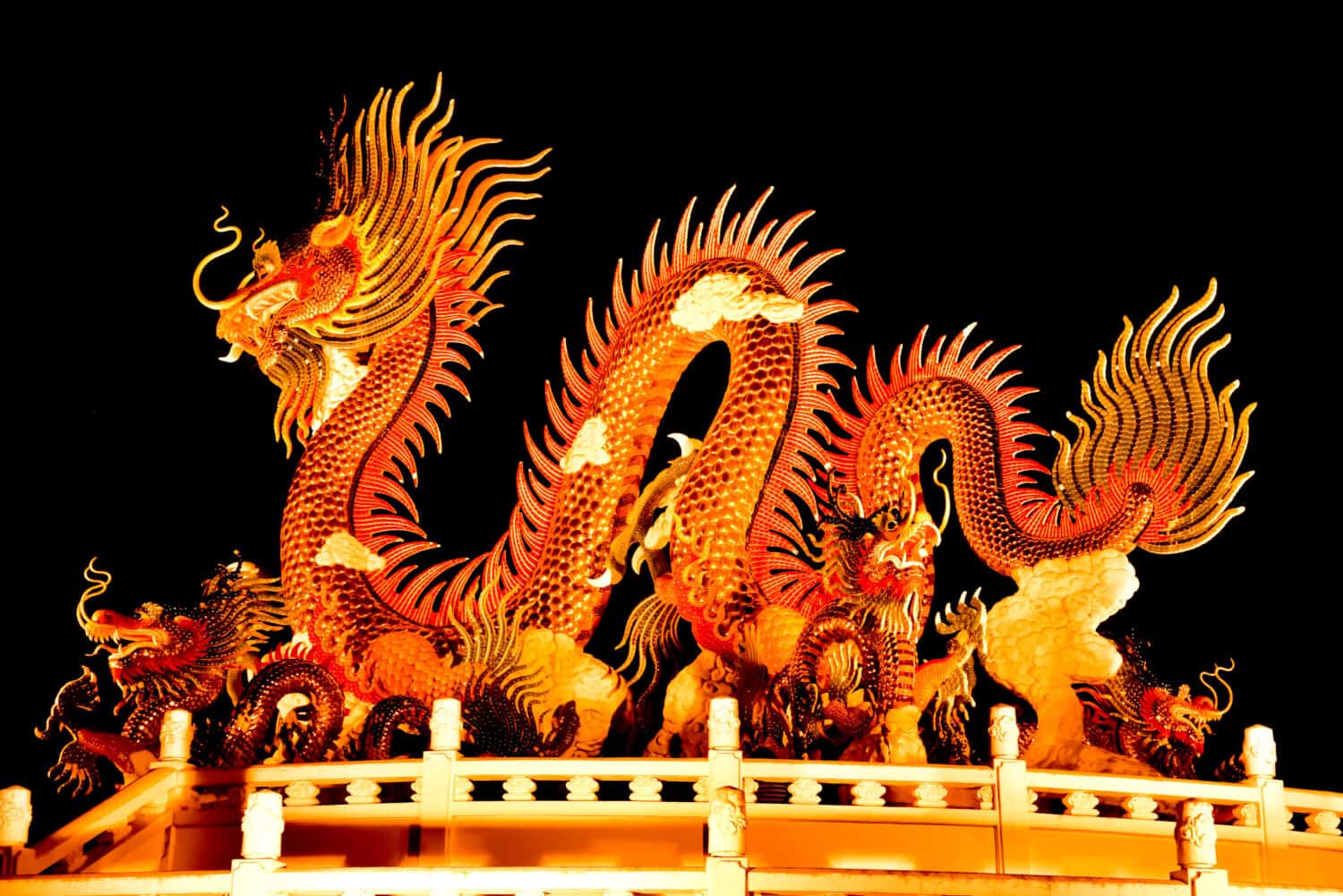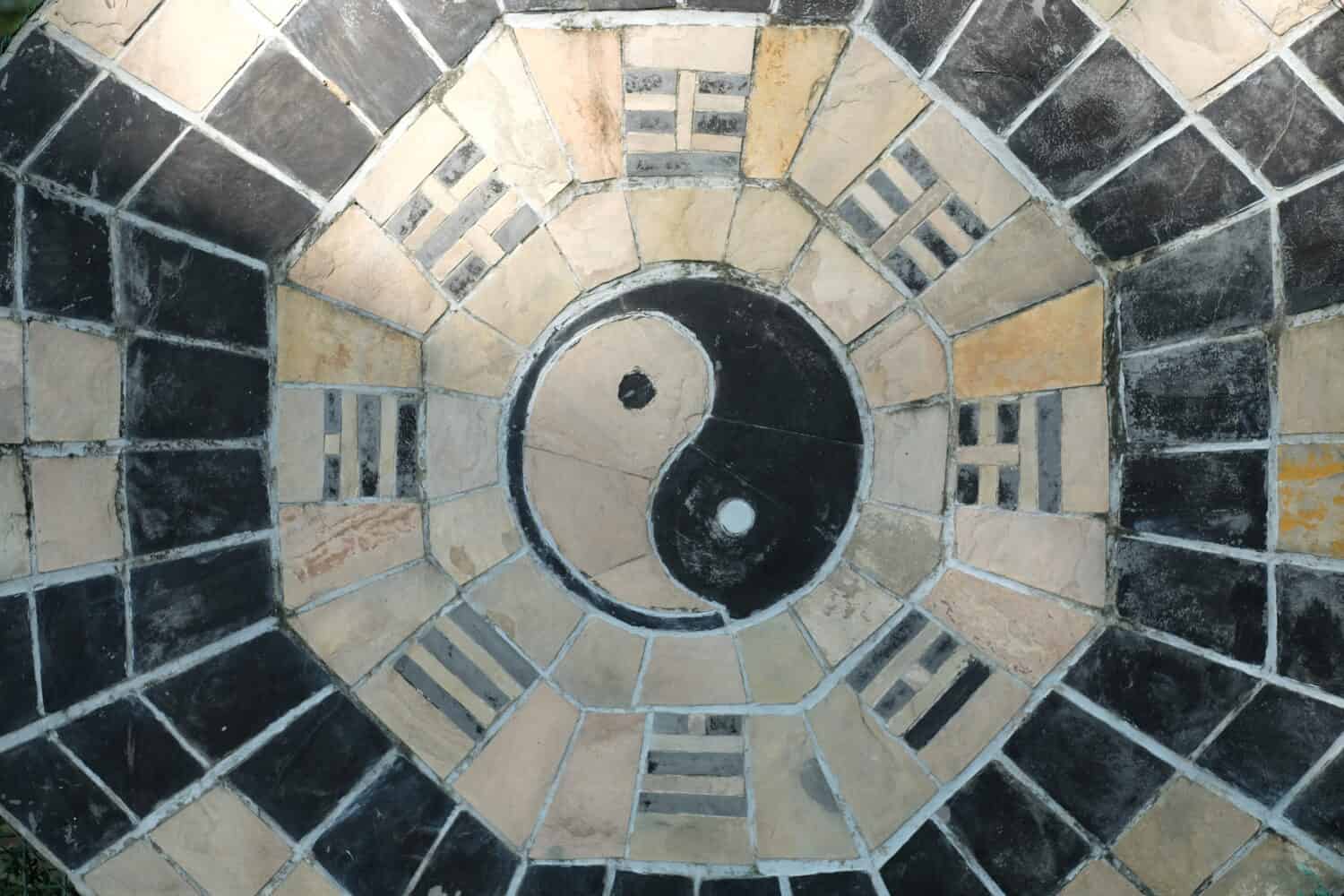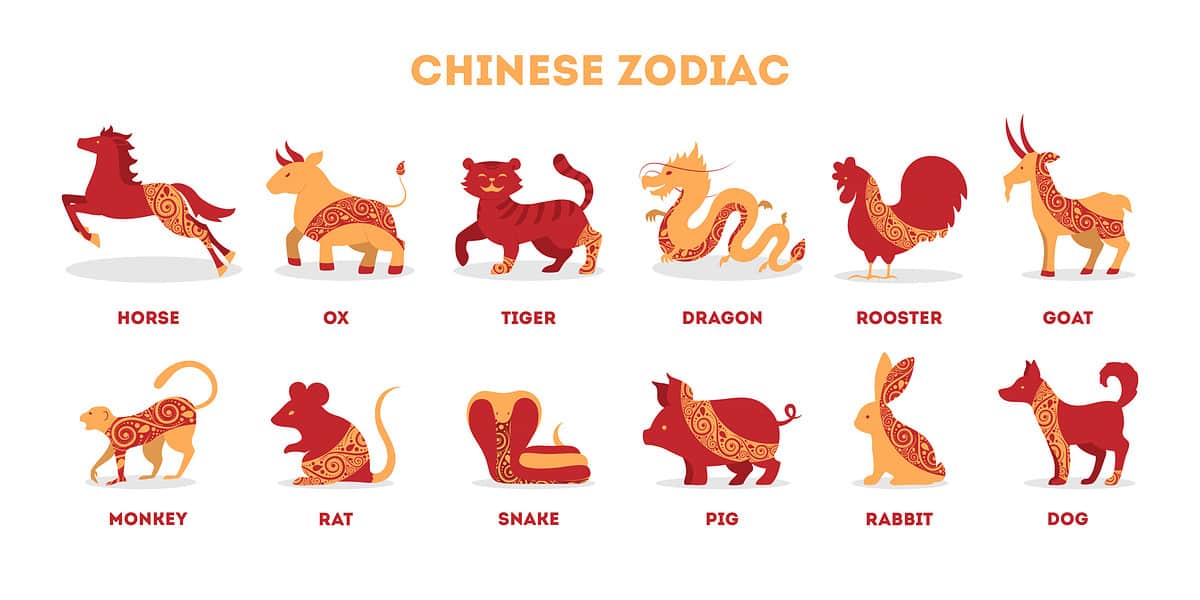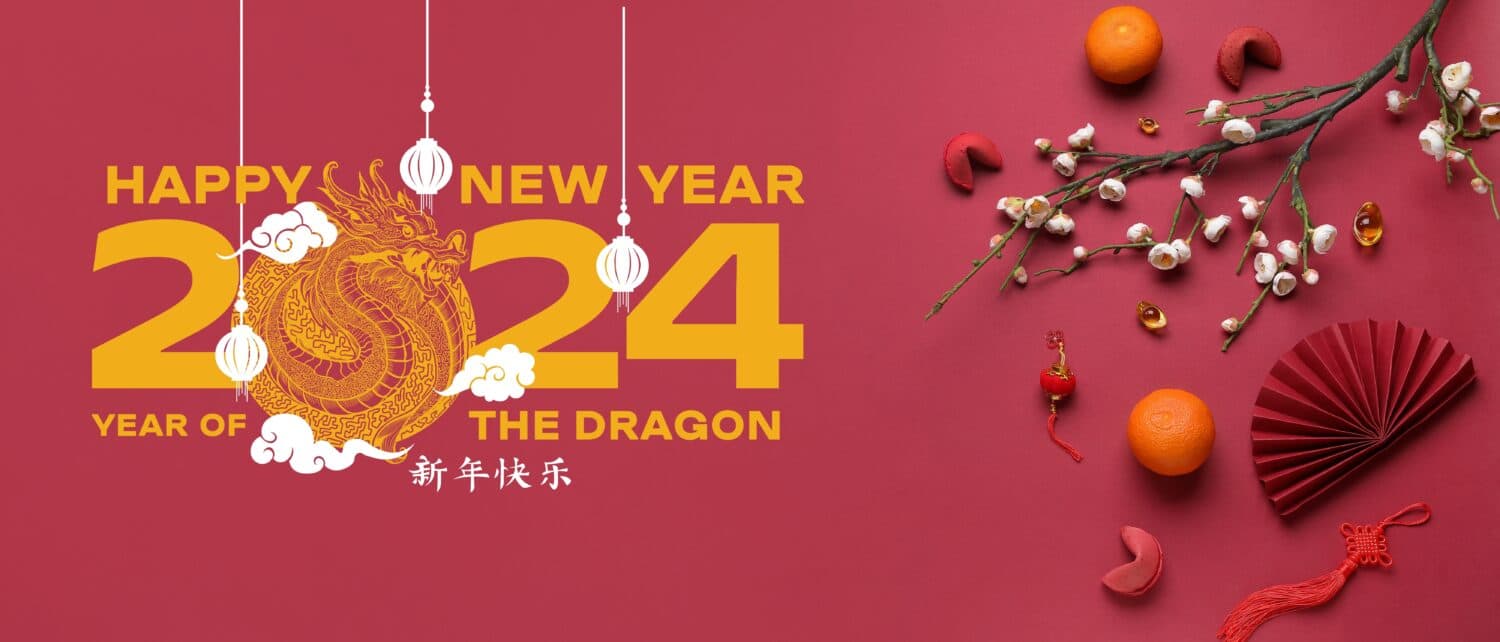On February 10th, 2024, the Lunar New Year, also known as the Spring Festival starts. This is celebrated by people in East and Southeast Asia, including China, Vietnam, and Korea. Many people in the United States also celebrate the Lunar New Year, commonly referring to it as the “Chinese New Year.”
The association of the Lunar New Year with the Chinese zodiac may explain this. The Chinese zodiac assigns an animal to symbolize each year, and the cycle of animals repeats every twelve years. Many people widely believe that the zodiac animal of one's birth year profoundly influences an individual's personality and prosperity in life.
Let us explore how people celebrate the Lunar New Year, its history, and the origins of the Chinese zodiac. Moreover, we will reveal the significance of the Year of the Dragon for people in 2024.
What is the Lunar New Year?
Almost a quarter of the world's population, nearly two billion people, celebrate the Lunar New Year, which is based on the cycles of the moon and dates back to the fourteenth century. The Chinese calendar follows a twelve-month cycle, like the Gregorian calendar. Each month starts with the new moon when the moon is completely dark. The start of the Lunar New Year varies every year because the lunar cycle shifts from month to month.
Since the 1990s, Chinese workers have enjoyed a week-long holiday for the new year. Nowadays, the Chinese Ministry of Commerce estimates that people spend approximately 820 billion yuan on shopping and dining during this celebration. Korea and Vietnam also recognize the Lunar New Year. In fact, each country has a different name for the Lunar New Year, such as Chūnjié (China/Mandarin), Seollal (Korea), and Tết (Vietnam).
During the traditionally week-long festival, people exchange gifts with their loved ones. Families decorate their homes with red ornaments and give each other money in red envelopes for good luck and prosperity. They also thoroughly clean their homes and wear new clothes to celebrate the occasion. Additionally, it is also a time for honoring ancestors and deities, with many families setting up altars and offering food, incense, and other offerings. Public celebrations include colorful parades, dragon and lion dances, and fireworks.
Celebrating the Lunar New Year
The Lunar New Year festival has a rich history and cultural significance in many Asian countries. In Korea, this celebration, called Seollal, lasts for three days. Families honor their ancestors, visit relatives, and enjoy traditional foods like “tteokguk,” a rice cake soup. In Vietnam, the lunar festival lasts for seven days. During this time, families exchange gifts, decorate their homes with flowers, and enjoy traditional foods like “bánh chưng,” a sticky rice cake.
Apart from China, Korea, and Vietnam, other countries throughout Southeast Asia also celebrate the Lunar New Year. In Japan, families celebrate the festival called “Shogatsu” by cleaning their homes, decorating them with traditional ornaments like “kadomatsu,” and eating “osechi ryori,” a special New Year's feast. Meanwhile, in Malaysia, families celebrate the new year with dragon and lion dances, and fireworks. They also eat traditional foods like “yee sang,” a salad made with raw fish and vegetables. In Taiwan, people celebrate this holiday with the Spring Festival, which is similar to the celebrations in China. There families gather to share traditional foods and exchange red envelopes filled with money.
Elaborate Lunar New Year celebrations take place in major US cities, including San Francisco and New York City. In fact, the San Francisco Chinese New Year parade is the largest celebration outside of Asia. San Francisco began celebrating the Lunar New Year during the Gold Rush of the 1860s when many Chinese immigrants moved to California. Boston, boasting the third largest Chinatown in the country, also puts on a parade along with traditional dance performances. In Anaheim, California, Disneyland annually hosts splendid Chinese New Year festivities featuring parades and traditional cuisine.

©meesilpa sornsing/Shutterstock.com
History and Origins of the Lunar New Year
During the Han Dynasty, which lasted from 202 BC to 220 AD, China began celebrating the Lunar New Year. Traditionally, this celebration marked the end of winter and the beginning of warmer weather. Korea began celebrating the Lunar New Year in the seventh century. Furthermore, the Vietnamese have been celebrating Tết, as they call it, since the Lý Dynasty, between 1009 AD and 1226 AD.
Many legends and customs are associated with the festival, steeping the Lunar New Year in tradition and symbolism. One of the most popular legends is about Nian, a beast said to eat human flesh on New Year's Day. However, the color red, loud noises, and fire frightened Nian. People decorated their homes with red paper decorations and lit lanterns all night. Additionally, they set off firecrackers to keep the beast away. This legend is the origin of many of the Lunar New Year celebrations around the world.
Chinese Astrology Explained
People often compare the Chinese zodiac and Western astrology, but their similarity ends with the fact that both have twelve zodiac symbols. To understand the Chinese zodiac, one must grasp several key concepts, such as the characteristics associated with each animal-based zodiac sign, the meanings of the five elements, and the interactions between the animal signs and elements. The concept of Yin and Yang, which symbolizes balance and harmony in nature, also has a significant influence on the Chinese zodiac.
The Meaning of Yin and Yang
Chinese philosophy centers on the Yin/Yang principle. It divides a circle into a black teardrop and a white teardrop. Yin is black, symbolizing the shadow self, active force, and masculine nature. Yang is white, symbolizing the light side, passive force, and feminine nature. Chinese astrologers believe these forces are interdependent and intertwined in the universe. Furthermore, they believe that the Ying and Yang are always seeking to achieve balance.

©Tanoy1412/Shutterstock.com
The Five Elements in the Chinese Zodiac
The five elements of Chinese astrology are known as “Wu Xing.” This phrase roughly translates to “changing states of being.” In Chinese astrology, the five elements are Wood, Fire, Earth, Metal, and Water. Each element is associated with specific characteristics, energies, and attributes. The Chinese zodiac assigns one of the five elements to each sign.
The behavior of each astrological sign is actively influenced by its corresponding element, which changes every year. For instance, 2023 was the Year of the Rabbit, which made it a Water Rabbit year. People born during the year of the Water Rabbit are generally very popular and show great consideration for others.
What the Five Elements Mean
Here is a list of what the five phases or elements in the Chinese zodiac symbolize.
- Wood (木 mù) – Wood symbolizes growth and change. This element also represents springtime, the liver in the body, the color green, and the direction east. Its related zodiac signs are the Tiger and Rabbit.
- Fire (火 huǒ) – The Fire element symbolizes energy, passion, and transformation. It represents summertime, the direction south, the color red, and the heart in the body. Fire's related zodiac signs are the Snake and the Horse.
- Earth (土 tǔ) – The element Earth symbolizes practicality, nurturing, and stability. It also signifies the transition between seasons, the central direction, the color yellow, and the spleen and stomach in the human body. Its related zodiac signs are the Ox, Dragon, Goat, and Dog.
- Metal (金 jīn) – Metal represents strength, structure, discipline, and precision. It is associated with autumn, the direction west, the color white, and the lungs in the body. The Monkey and the Rooster are the zodiac signs associated with metal.
- Water (水 shuǐ) – This element symbolizes adaptability, emotions, and intuition. Water represents the season of winter, the direction north, the colors black and blue, and the kidneys and bladder in the body. The Rat and the Pig are the zodiac signs linked to Water.
Understanding the five elements is not only important for Chinese astrology but also essential for understanding the concepts of traditional Chinese medicine and Feng Shui. In astrology, medicine, and Feng Shui, each element interacts with the others to create a system of relationships known as “The Five Element Cycle.”
The Chinese Zodiac
“Sheng Xiao” or “Shu Xiang,” the Chinese Zodiac, features twelve zodiac signs that follow each other in a specific order. Furthermore, the Chinese zodiac follows a twelve-year cycle, meaning that after every twelve years, the same sequence of animals is repeated. Moreover, the year of your birth determines your zodiac sign.
Here is the sequence of the Chinese zodiac with each animal's related personality traits.
- Rat – Adaptable, quick-witted, and timid.
- Ox – Calm, honest, and stubborn.
- Tiger – Confident, loyal, and short-tempered.
- Rabbit – Gentle, compassionate, and timid.
- Dragon – Ambitious, frank, and generous.
- Snake – Jealous, eloquent, and sly.
- Horse – Patient, steady, and opinionated.
- Sheep – Gentle, soft-hearted, and moody.
- Monkey – Self-assured, sociable, and impatient.
- Rooster – Confident, independent, and vain.
- Dog – Brave, loyal, and emotional.
- Pig – Sincere, warm-hearted, and jealous.
People often consult the Chinese zodiac for guidance on relationships, career choices, and other life predictions.

©inspiring.team/Shutterstock.com
2024: The Year of the Dragon
As the fifth animal in the Chinese zodiac cycle, the dragon is a powerful sign, partly because it is the only sign in the Chinese zodiac represented by a mythical animal. People born in the Year of the Dragon inherit the Dragon's strong qualities, such as confidence, charm, ambition, passion, and love for adventure. Astrologers believe the Year of the Dragon brings significant changes, breakthroughs, and achievements, making it an excellent time for new beginnings, innovation, and bold action. If you are considering making a big change in your life, astrologers believe that the year of the dragon is a good time to do so.
Chinese astrology assigns each dragon year with one of the five Chinese elements. The Water Dragon marked the end of the previous dragon year in 2012. In 2024, the Wood Dragon will bring a reflective nature to the dragon. Astrologers believe that wood tempers the dragon and is aligned with its sense of duty and purpose. Ethics and morality are also associated with the wood element.
The Year of the Wood Dragon comes every sixty years. For instance, the last Wood Dragon year in 1964 brought significant changes to America. The Beatles arrived in the United States, changing the music landscape forever. President Johnson signed the Civil Rights Act, which made discrimination based on color, race, religion, and sexual orientation illegal. We will have to wait and see if 2024, the next Year of the Wood Dragon, will bring the same kinds of social changes.
In Summary
February 10th, the Lunar New Year, also known as the Chinese New Year, usher in the Year of the Dragon. The Dragon is the fifth sign of the Chinese zodiac and the only mythological animal. For this reason, the Dragon is considered one of the most auspicious and powerful signs in the Chinese zodiac.
Astrologers believe the year of the Dragon is the time to make major life changes and to take risks. Moreover, the element assigned to the 2024 Dragon Year is wood. Those born in the Wood Dragon year are courageous, but they also have a strong sense of duty and morals. Astrologers believe that 2024's Year of the Dragon may become another watershed year full of changes. Time will tell!
The image featured at the top of this post is ©Pixel-Shot/Shutterstock.com.
